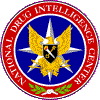ARCHIVED
![]() To Contents Previous Page Next Page To Publication
Page To Home Page
To Contents Previous Page Next Page To Publication
Page To Home Page
 |
National Drug Intelligence Center National Drug Threat Assessment 2004 April 2004 InhalantsThe abuse of inhalants is a relatively low threat to the country; however, inhalant abuse, particularly among adolescents, is a concern among law enforcement and public health agencies. Inhalants are chemical vapors that produce mind-altering effects when users inhale them by sniffing or snorting. These chemical vapors are found in more than 1,000 household products and typically belong to several broad categories: volatile solvents (paint thinner, gasoline, correction fluid, glue); aerosols (paint, deodorant, hair spray); gases (ether, chloroform, nitrous oxide); and nitrites (cyclohexyl nitrite, amyl nitrite, and butyl nitrite). The common household products that are misused as inhalants are legally available for their intended and legitimate uses. However, 46 states have enacted legislation designed to prevent products that are commonly used as inhalants from being sold to minors. Individuals of all ages use inhalants, but teens and young adults account for a large portion of the inhalant abuse in the United States. NSDUH data reveal that approximately 2.1 million people (0.9%) aged 12 and older used inhalants at least once in the past year. The survey further revealed that approximately 1.1 million individuals aged 12 to 17 and 685,000 individuals aged 18 to 25 used inhalants in the past year. MTF data indicate that inhalant abuse among high school students appears to be highest among eighth graders. According to MTF, past year rates of inhalant abuse from 2002 to 2003 were 7.7 and 8.7 percent among eighth graders, 5.8 and 5.4 percent among tenth graders, and 4.5 and 3.9 percent among twelfth graders; however, none of the changes were statistically significant. Side effects associated with the abuse of inhalants include dizziness, strong hallucinations, delusions, belligerence, apathy, and impaired judgment. Long-term abusers experience additional problems including weight loss, muscle weakness, disorientation, inattentiveness, lack of coordination, irritability, and depression. Individuals who cease abuse of inhalants often endure withdrawal symptoms such as sweating, rapid pulse, hand tremors, insomnia, nausea or vomiting, hallucinations, and grand mal seizures. Chronic inhalant abuse may cause serious and sometimes irreversible damage to the user's heart, liver, kidneys, lungs, and brain. Death can occur after a single use of inhalants or after prolonged use. Sudden sniffing death (SSD) may result within minutes of inhalant abuse from irregular heart rhythm leading to heart failure. |
End of page.